A FLOWER (PERHAPS EDIBLE) NOW AT ITS BEST
A Flower? Not
The same cold weather that has killed most herbaceous plants, or at least battered them ragged, has also brought out the color in flowering kale. Of course, the color is not really that of a flower, but that of a whorl of leaves — glaucous green or purple on the outside of the rosette and becoming more intensely white, pink, or red towards the center. Some varieties are even more ornate, with fringed leaves.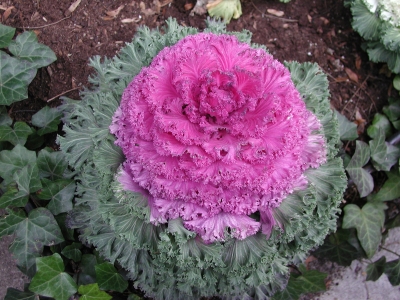
About this time each year, I make a mental note to plant seeds of flowering kale next season. But I always eventually forget to do it. For the past few weeks, though, I’ve been admiring a planting of flowering kale that has inspired me now to write myself a note about next year’s planting.
My source of inspiration can hardly be called a planting. It’s not a bed full of flowering kale, splashing color all over the place. Nor is it a single file of plants, lining and grabbing attention from a path.
The planting I have been admiring consists of merely two plants. Each plant is in a low, whitish concrete planter flanking the symmetrical, white portal of an older home. The plants are squat and full, and add just enough color to accent the scene.
Don’t Rush It
So what does it take to grow a squat, colorful flowering kale plant? First, the squat: This demands sowing at the correct time. Kale planted as soon as the ground thaws in early spring grows too tall by autumn. Such gangly stalks, flopping this way and that, and capped by a rosette of leaves, would hardly be inspiration to grow flowering kale.
My plan is to wait to sow the seeds until late June. I’ll sow the seeds in flats, then transfer seedlings to individual pots, because I’ll need only a few plants if I am going to emulate the subdued yet majestic planting I’ve been admiring lately.
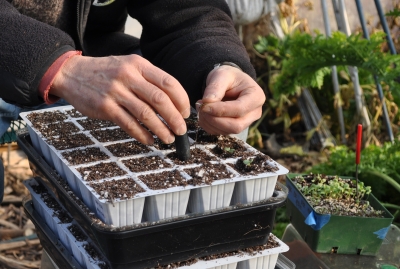
Pricking out seedlings, but I’ll need only a few of kale
Full sunlight is the other ingredient needed to keep the plants compact. Once the weather cools in autumn, growth slows enough so that the pots can be moved to a slightly shaded location without the plants growing lanky.
To bring out the best color in flowering kale, the plants must be kept just a wee bit hungry for nitrogen. And the same full sunlight which keeps the plants from stretching for light also helps bring out the colors. Again, light is not so critical once the weather turns cold.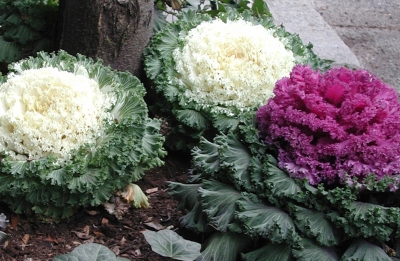
(When looking through seed catalogs, I see that there also are ornamental cabbages. They’re very similar to the ornamental kales, the same species, in fact, except they have smooth and more or less unruffled leaves. Ornamental kale leaves are ruffled and textured, with feathered edges.)
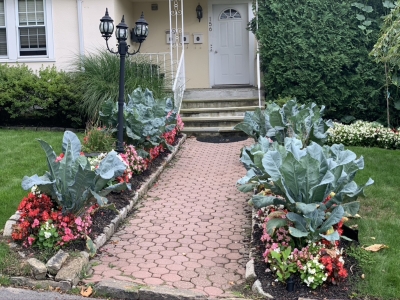
Broccoli amongst flowers. Why not? Or are they collards?
And the Taste . . .
If you have been wondering whether or not flowering kale is edible, the answer is: “Yes.” But is it tasty? I don’t know since I’ve never nibbled a leaf from any of those ornamental plantings I’ve seen. Some web sources contend that ornamental kale’s flavor is inferior to that of vegetable kale. Other sources assert both are equally edible. Next year, when I grow ornamental kale, I’ll form my own opinion. Do you a first hand experience with its flavor to share?
As a vegetable, one of kale’s main asset is its tolerance for frigid weather. Another asset is that it’s is a powerhouse of vitamins and minerals. Kale, a food crop that dates back to 2000 B.C. in Eastern Mediterranean regions, offers something fresh and green from the garden long after everything else fresh is gone.
Kale needs slightly different conditions when grown as a vegetable than when grown as a “flower.” Kale for eating, like other leafy greens, tastes best when its leaves are succulent. Succulent growth is achieved with a rich, moist soil; a little shade will do no harm. You can harvest just the outer leaves as the plant grows, leaving the top to continue growing new leaves. I sow it in very early spring for a spring crop, and then again in midsummer for a fall crop. The spring crop can go on through summer and on into fall, or longer. This second sowing goes in a bed freed up in late summer, following sweet corn or bush beans, for example, in preparation for a suitable abundance of kale for the cold months ahead.
Kale is another one of those vegetables whose flavor supposedly improves after the leaves are touched by frost. More than once I’ve read that the flavor actually becomes sweet? Well, I don’t believe any of this. I’ve grown kale many times over the years, and the best of them — Blue Scotch Curled is one of my favorites — are excellent any time of year. If any ornamental variety tastes similar, it will provide a feast for the eyes and as well as for the belly.


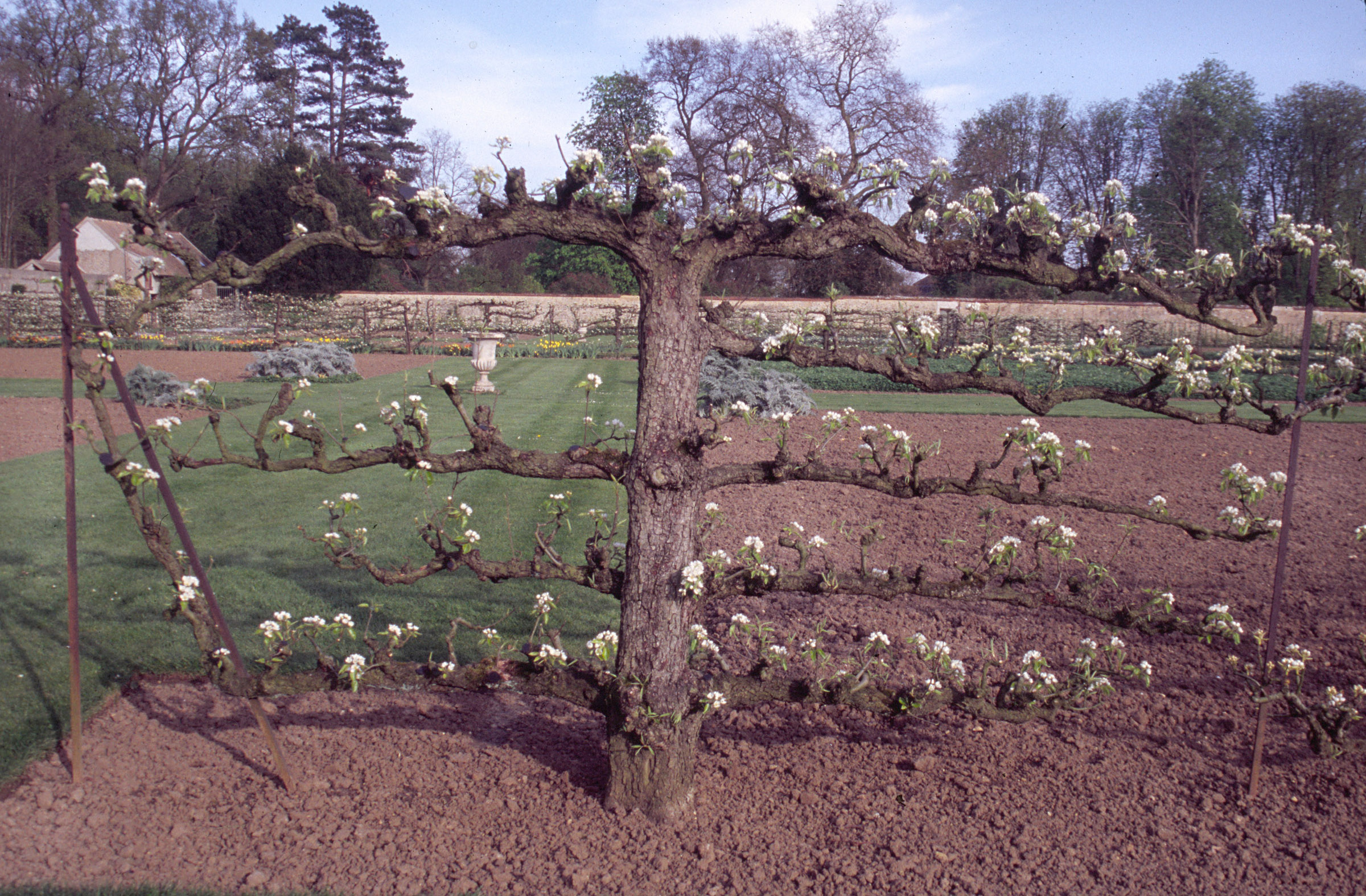
I have eaten “ornamental” kale and the flavor is essentially the same as any other similar (frilly-leaved) kale. The different colored leaves are slightly different in flavor and there can be a slightly bitter edge to the green leaves that some tasters may find unpleasant. I still favor “lacinato” kales for being the most flavorful and possessing the best culinary qualities.
Thanks Rob. I’m going to grow it and try it next year. I’m not that hopeful about the flavor, though, because I don’t like most bitter things or Lacinata kale. But I’ll give it a go.
I planted Kale for the first time this past spring – Japanese Flowereing Kale and Scarlet Kale, both from Bakercreek. The Flowering Kale is not as colorful as seen in the catalog, but taste excellent during the fall harvest. The Scarlet is deep purple and very nice looking. I still have to taste them yet and I have 5 plants since spring… Just gone overboard with my garden as this is my second year. Thinking to cut them down to Shorter height(5” now) so I could put give them some frost protection. Will that work > Zone 5B.
They’ll survive many winters pretty well without protection. If they do make it through winter, next season they will start flowering and make few leaves.